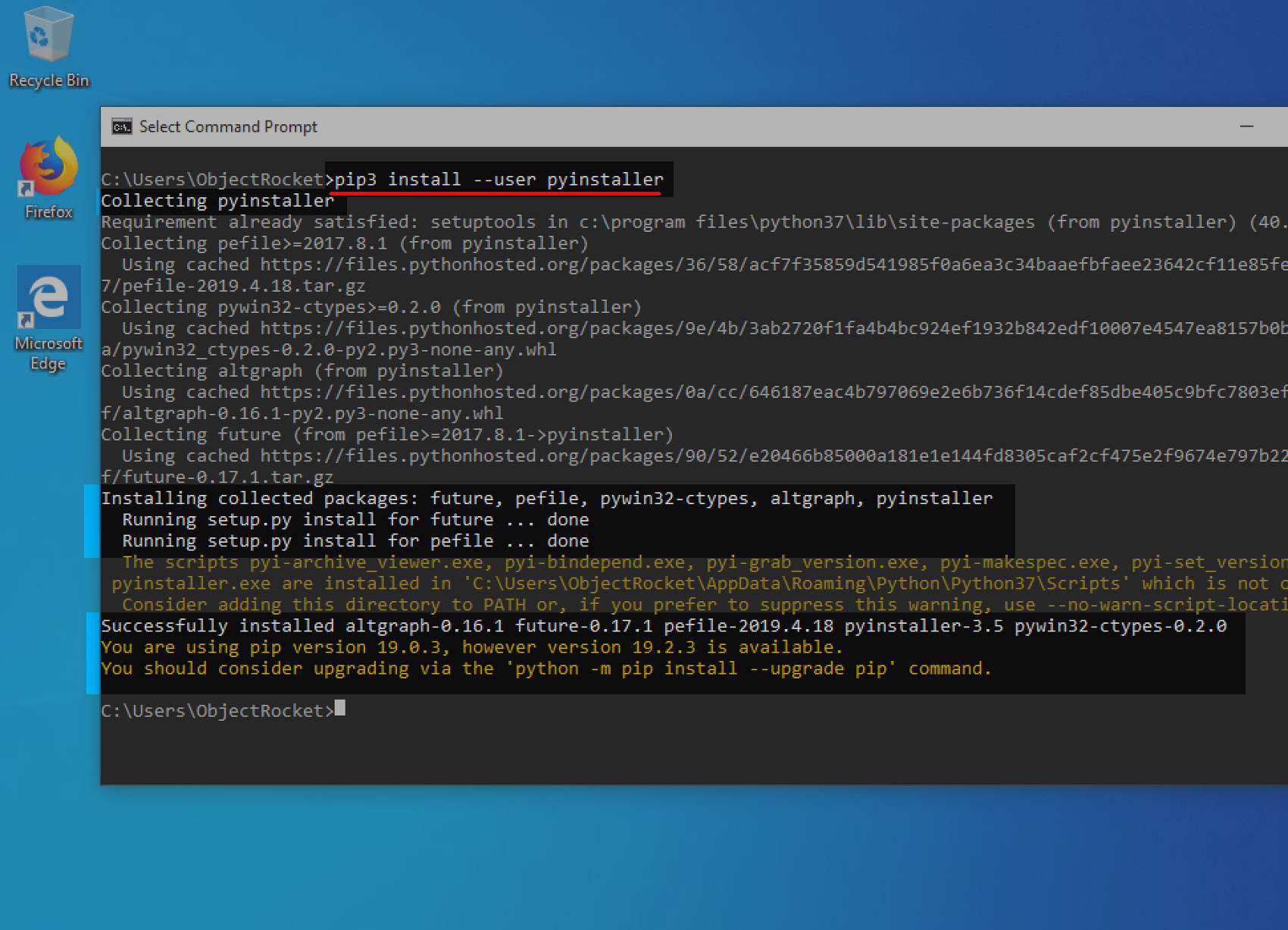
- PIP3 INSTALL WINDOWS HOW TO
- PIP3 INSTALL WINDOWS UPDATE
- PIP3 INSTALL WINDOWS SOFTWARE
- PIP3 INSTALL WINDOWS DOWNLOAD
Note: pip 21.0, in January 2021, removed Python 2 support, per pip’s Python 2 support policy.

We want your input, so sign up for our user experience research studies to help us do it right. In pip 20.3, we’ve made a big improvement to the heart of pip learn more. We release updates regularly, with a new version every 3 months.
PIP3 INSTALL WINDOWS HOW TO
Please take a look at our documentation for how to install and use pip: You can use pip to install packages from the Python Package Index and other indexes. With pip, we can install packages from PyPI, version control, local projects, and from distribution files but in most cases, you will install packages from PyPI.Pip is the package installer for Python. In this section, we show you a few useful basic pip commands. This way you do not have to worry about affecting other Python projects. Step 3: Try to search for something similar to C:\Python37. You can see a list of all the locations added to the PATH variable.

Just do this thing through the following steps: Step 1: Launch Command Prompt as administrator. Python Virtual Environments allows you to install Python modules in an isolated location for a specific project, rather than being installed globally. Firstly you should know if your PIP installation is added to your PATH variable. In most cases, you should use pip within a virtual environment You should install Python modules globally using pip only if there is no package available through the package manager. Package manager because they are tested to work properly on Ubuntu systems. When installing python modules globally it is highly recommended to install distribution provided python modules using the apt The version number may vary, but it will look something like this: pip 9.0.1 from /usr/lib/python2.7/dist-packages (python 2.7) Verify the installation by printing the pip version number: pip -version The command above will install Python2, Pip and all the dependencies required for building Python modules. Install pip for Python 2 with: sudo apt install python-pip
PIP3 INSTALL WINDOWS UPDATE
Update the package index by running the following command: sudo apt update On all of Windows, macOS, and Linux: Install Anaconda (it. To install Python 2 and pip for Python 2, complete the following steps: The only prerequisite for installing NumPy is Python itself. Python 2 is not installed by default in Ubuntu 18.04. The version number may vary, but it will look something like this: pip 9.0.1 from /usr/lib/python3/dist-packages (python 3.6) Once the installation is complete, verify the installation by checking the pip version: pip3 -version The command above will also install all the dependencies required for building Python modules. Use the following command to install pip for Python 3: sudo apt install python3-pip Start by updating the package list using the following command: sudo apt update Complete the following steps to install pip ( pip3) for Python 3: Voila pip is now installed on your system.

and wait through the installation process.
PIP3 INSTALL WINDOWS DOWNLOAD
or Use the following command to download pip directly, curl -o get-pip.py Now execute the downloaded file using below command python3 get-pip.py. Ubuntu 18.04 ships with Python 3, as the default Python installation. Download the get-pip.py file and store it in the same directory as python is installed. After finishing the installation, it is recommended to choose the option to disable path length to avoid any problems with your Python installation. On running the downloaded installer, you will get this window. Prerequisites #īefore continuing with this tutorial, make sure you are logged in as a user with sudo privileges Don’t forget to check Pandas Basic Functionality. We will also walk you through the basics of installing and managing Python packages with pip.

The installation is incorrectly added in your PATH It’s easy to mess up the PATH if you add it manually. In this tutorial, we will show you how to install Python Pip on Ubuntu 18.04 using the apt PIP installation is not added to the system variable In order to be able to run Python commands from a CMD window, you will need to add the path of your PiP installation to your PATH in the system variable. to activate virtualenv on Windows, activate script is in the Scripts folder : pathtoenvScriptsactivate. Activate your virtualenv: on Windows, virtualenv creates a batch file. Pip is not installed by default on Ubuntu 18.04, but the installation is pretty straightforward. In your Command Prompt navigate to your project: cd yourproject.
PIP3 INSTALL WINDOWS SOFTWARE
Pip is a package management system that simplifies installation and management of software packages written in Python such as those found in the Python Package Index (PyPI).


 0 kommentar(er)
0 kommentar(er)
